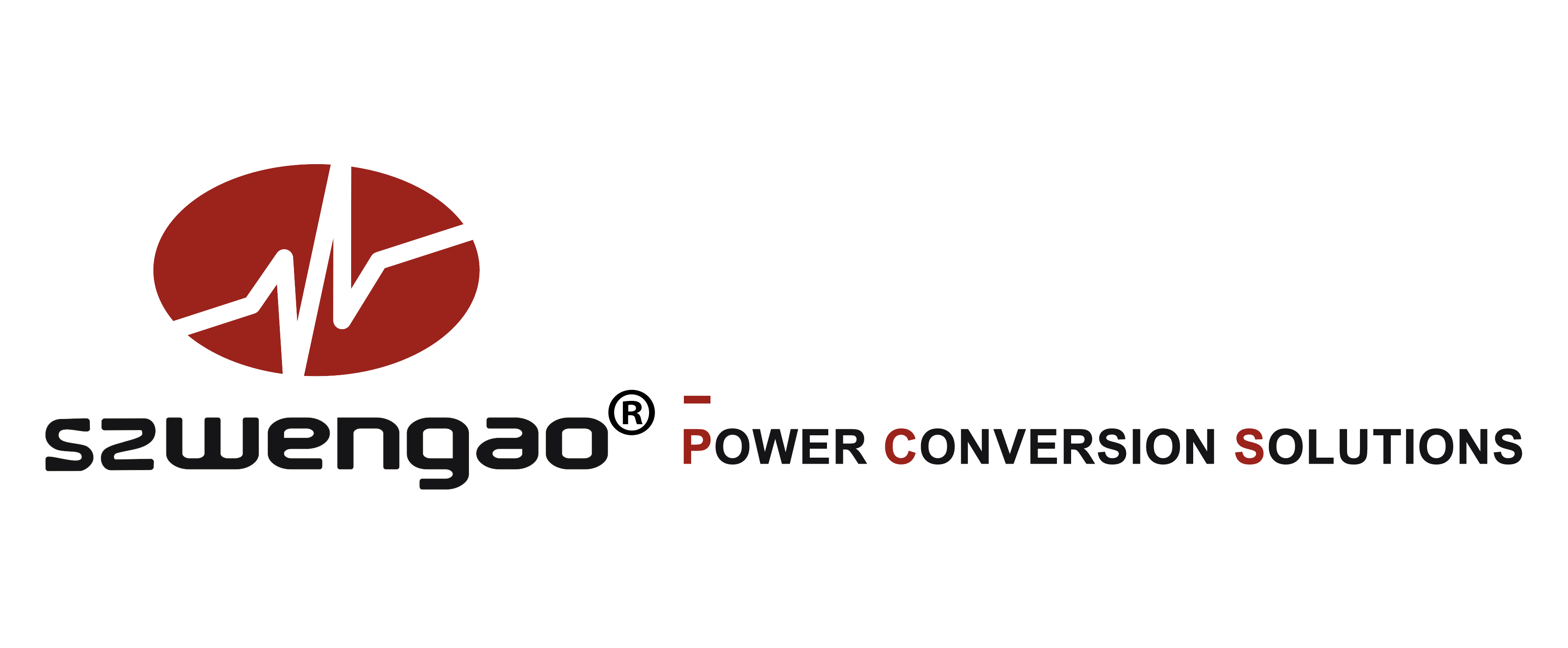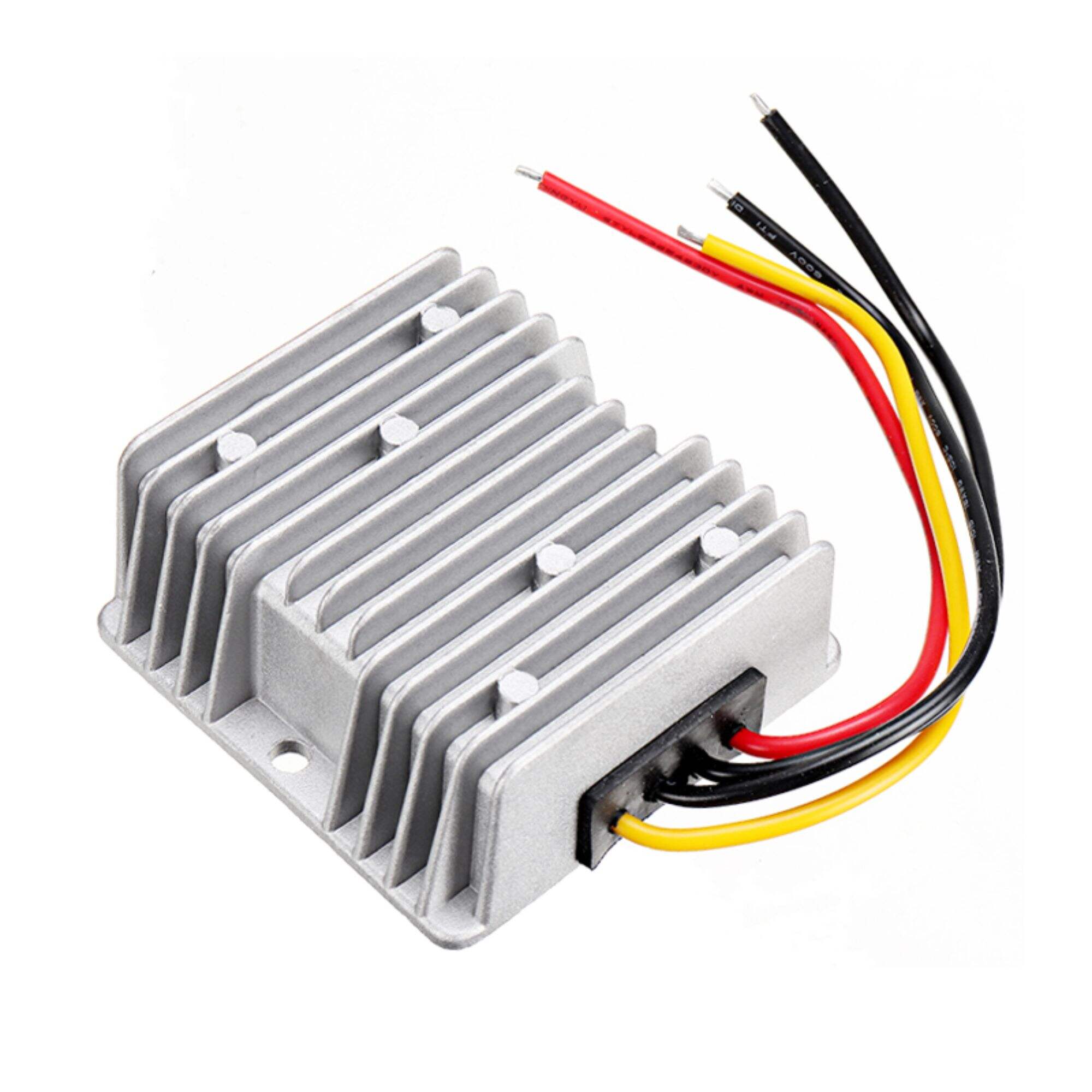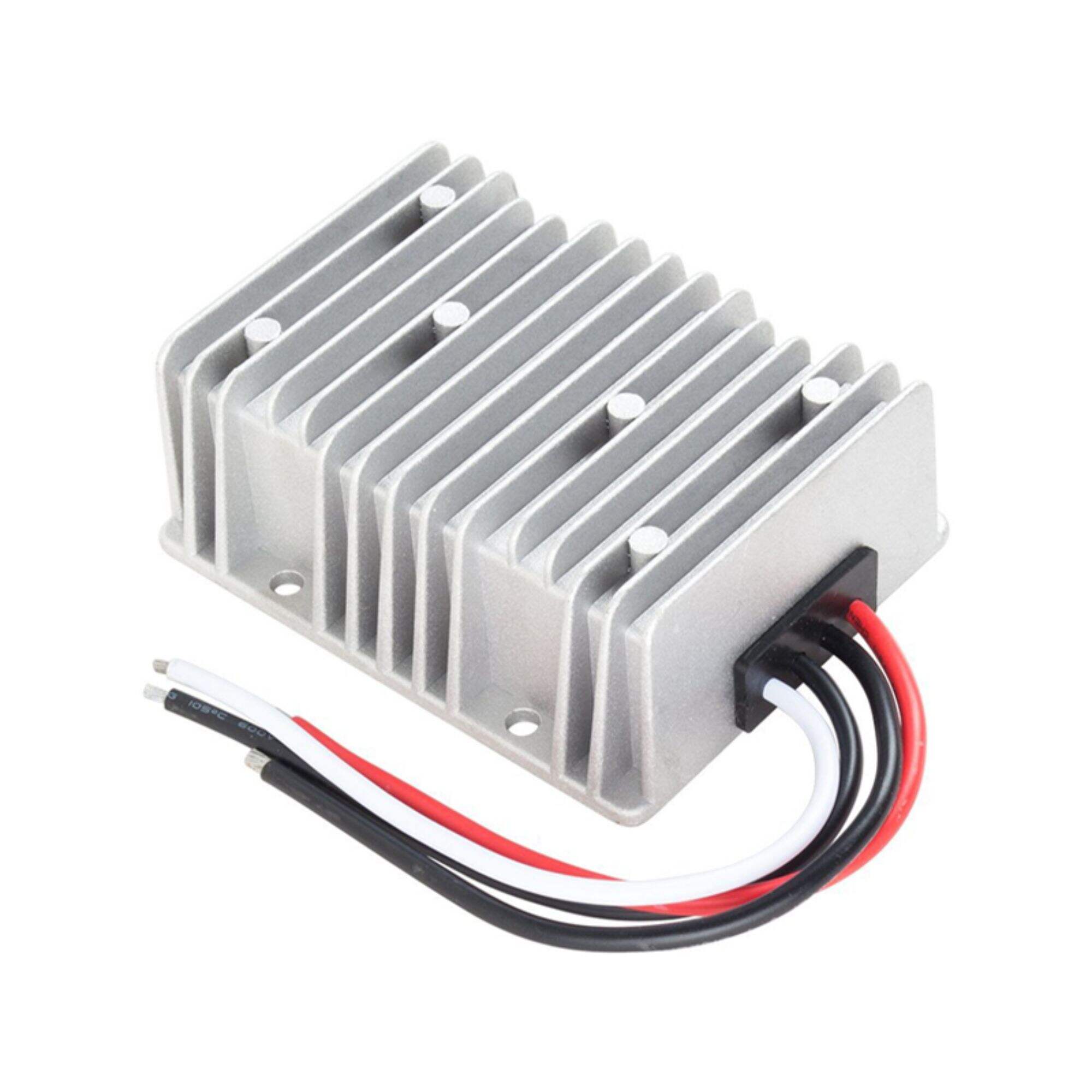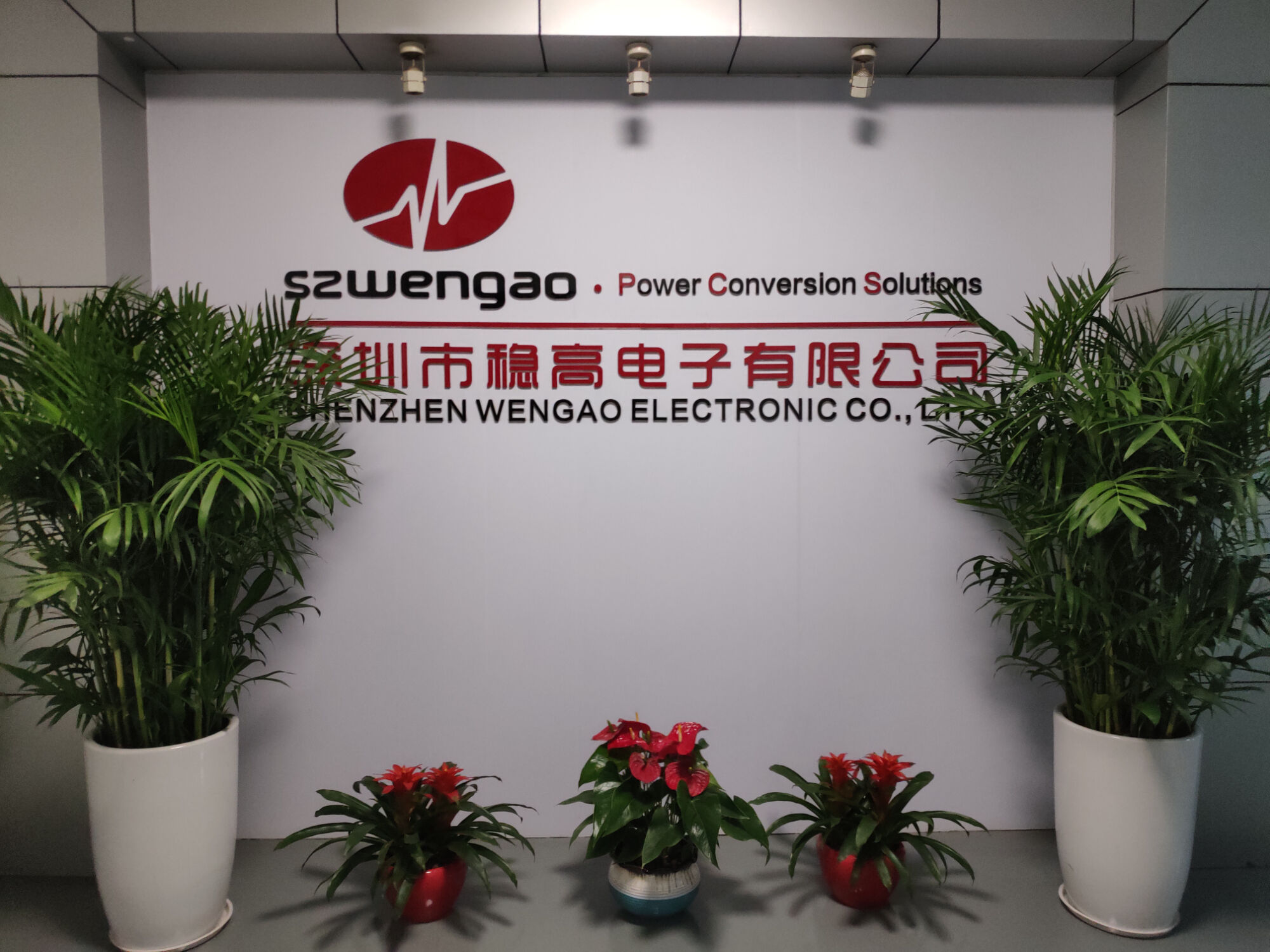Características de protección ambiental del convertidor DC-DC
Comprendiendo los Convertidores DC-DC
Un convertidor DC-DC es un dispositivo electrónico diseñado para cambiar el nivel de voltaje de una corriente continua (DC) de un valor a otro. Estos convertidores son fundamentales para muchos sistemas electrónicos, ya que pueden aumentar (boost) o reducir (buck) el voltaje para asegurar que los componentes reciban la potencia correcta que necesitan. Al hacerlo, los convertidores DC-DC facilitan la adaptación sin problemas de los niveles de voltaje a través de varios componentes del sistema, lo que los hace esenciales para mantener la funcionalidad y eficiencia de la electrónica moderna.
La importancia de los convertidores DC-DC va más allá del simple ajuste de voltaje; juegan un papel crítico en los sistemas de gestión de energía. Al optimizar la distribución de energía, estos convertidores ayudan a maximizar la eficiencia general del sistema. Por ejemplo, en dispositivos portátiles, los convertidores DC-DC pueden ajustar los niveles de energía para extender la vida de la batería al gestionar eficientemente los niveles de voltaje a medida que la batería se agota. Su utilidad abarca diversas aplicaciones, desde electrónica de consumo hasta maquinaria industrial, subrayando su importancia en la minimización del desperdicio de energía y en la prevención de interrupciones inducidas por fluctuaciones de energía dentro de los sistemas.
Tipos de convertidores DC-DC
Los convertidores DC-DC vienen en varios tipos, cada uno sirviendo funciones distintas en la gestión de voltaje. Convertidores Boost están diseñados para aumentar el voltaje de salida a partir de un nivel de voltaje de entrada más bajo. Funcionan almacenando energía en un inductor cuando un interruptor está cerrado y liberándola a un voltaje más alto cuando el interruptor se abre. Esto los hace ideales para aplicaciones donde los dispositivos necesitan voltajes más altos, como ciertos sistemas automotrices e instalaciones de energía renovable. Por ejemplo, se utilizan comúnmente en dispositivos alimentados por batería donde un voltaje alto constante es esencial a pesar de la variación en la potencia de la batería.
Convertidores Buck , también conocidos como convertidores step-down, reducen el voltaje de entrada a un voltaje de salida más bajo y estable. Utilizan un mecanismo de conmutación para reducir eficientemente el voltaje, lo que es beneficioso en la electrónica de consumo como teléfonos inteligentes y laptops que requieren niveles de voltaje más bajos y consistentes para operar sin generación excesiva de calor o pérdida de energía. Su alta eficiencia en la conversión de voltaje sin un desperdicio significativo de energía los convierte en una opción preferida para alimentar circuitos de bajo voltaje en una amplia gama de dispositivos electrónicos.
Conversores de carga de carga ofrecen flexibilidad al proporcionar tanto el aumento como la reducción del voltaje según lo requiera el sistema. Esta funcionalidad dual es particularmente útil en soluciones de energía renovable, donde el voltaje de entrada puede variar, como en los sistemas de energía solar. Los convertidores buck-boost aseguran niveles de voltaje consistentes, lo que los hace críticos para suavizar las fluctuaciones y mantener la eficiencia y confiabilidad del sistema, independientemente de las condiciones de entrada.
Al comprender estos tipos de convertidores y sus aplicaciones, uno puede seleccionar el convertidor apropiado para satisfacer necesidades de potencia específicas, asegurando un uso eficiente de la energía en varios sistemas y aplicaciones electrónicas.
Cómo funcionan los convertidores DC-DC
Comprender los principios de funcionamiento de los convertidores DC-DC implica profundizar en las funciones críticas de los componentes de almacenamiento de energía como inductores y capacitores. Estos componentes son esenciales porque almacenan y liberan energía de manera eficiente, manteniendo un voltaje de salida estable. Los inductores almacenan energía en un campo magnético cuando la corriente eléctrica fluye a través de ellos, y los capacitores almacenan energía en un campo eléctrico cuando están cargados. Su acción combinada asegura que los convertidores DC-DC puedan entregar una salida de potencia consistente al suavizar las fluctuaciones en el voltaje, lo que los hace ideales para diversas aplicaciones electrónicas.
La funcionalidad de los convertidores DC-DC depende en gran medida de los mecanismos de conmutación, principalmente gobernados por el proceso conocido como modulación por ancho de pulso (PWM). Esto implica encender y apagar interruptores electrónicos, como transistores, a altas frecuencias. Los transistores son componentes clave que alteran rápidamente el estado del flujo de corriente eléctrica, permitiendo un control preciso sobre la conversión de voltaje. PWM es crucial en este contexto ya que controla la duración durante la cual el interruptor permanece encendido, regulando así el nivel de voltaje. La acción orquestada de estos componentes asegura que los convertidores DC-DC logren alta eficiencia y fiabilidad, especialmente en aplicaciones sensibles a la energía donde se minimiza la pérdida de energía.
Aplicaciones de los convertidores DC-DC en diversas industrias
Los convertidores DC-DC juegan un papel crucial en la electrónica de consumo, asegurando una carga eficiente y la gestión de energía en dispositivos como teléfonos inteligentes y laptops. Estos convertidores permiten ajustes de voltaje para coincidir con los requisitos del dispositivo. Por ejemplo, habilitan tecnologías de carga rápida al gestionar la entrada de energía de manera efectiva, previniendo el sobrecalentamiento o daños durante los procesos de carga a alta velocidad.
En el sector automotriz, los convertidores DC-DC son integrales para vehículos eléctricos (EVs) y sistemas híbridos, donde ayudan en la distribución de energía a través de varios componentes electrónicos. Gestionan el voltaje del paquete de baterías y lo ajustan para alimentar sistemas auxiliares, como sistemas de infoentretenimiento y frenos electrónicos. Específicamente, en vehículos híbridos, los convertidores pueden alternar entre la energía de la batería y la del motor, manteniendo una eficiencia óptima.
Los sistemas de energía renovable, incluidos los paneles solares y las turbinas eólicas, dependen en gran medida de los convertidores DC-DC para la optimización de la energía. Para los paneles solares, estos convertidores aumentan o reducen la potencia de salida para que coincida con los sistemas de almacenamiento o los requisitos de la red, maximizando la eficiencia. En las turbinas eólicas, aseguran un suministro de energía estable al convertir voltajes fluctuantes debido a las variaciones en la velocidad del viento en una forma estable, mejorando la fiabilidad y eficiencia del sistema.
Beneficios de los convertidores DC-DC en la reducción del impacto ambiental
Los convertidores DC-DC mejoran significativamente la eficiencia energética, lo que lleva a una reducción del desperdicio de energía. Al convertir y regular los niveles de voltaje en dispositivos electrónicos, estos convertidores minimizan la disipación de energía, reduciendo así la cantidad de energía necesaria para su funcionamiento. La investigación indica que al mejorar las eficiencias de conversión de energía, las industrias pueden reducir sustancialmente su consumo energético. Por ejemplo, los convertidores de conmutación altamente eficientes logran hasta un 85-90% de eficiencia, lo que se traduce en menos energía perdida como calor, permitiendo una mayor duración de la batería y un menor uso de recursos energéticos.
Además, el uso de convertidores DC-DC contribuye a una menor huella de carbono, especialmente en sectores como la energía renovable. Estos convertidores son fundamentales para optimizar los sistemas de energía al garantizar la máxima eficiencia en dispositivos como paneles solares y turbinas eólicas. Al facilitar la gestión y distribución eficiente de la energía, apoyan a las industrias en el logro de sus objetivos de sostenibilidad. La integración de convertidores DC-DC en sistemas de energía renovable promueve el uso de tecnologías más ecológicas, reduciendo así significativamente las emisiones que contribuyen al cambio climático. Su aplicación subraya un compromiso con prácticas respetuosas con el medio ambiente al proporcionar soluciones de suministro de energía estables y eficientes.
Características clave a considerar al seleccionar un convertidor DC-DC
Al seleccionar un convertidor DC-DC, entender la importancia de las clasificaciones de voltaje de entrada y salida es crucial. Estas clasificaciones deben coincidir con los requisitos de la aplicación para garantizar un rendimiento óptimo. Niveles de voltaje incorrectos pueden llevar a una operación ineficiente o dañar el dispositivo. Por lo tanto, evaluar la compatibilidad de voltaje es el primer paso para elegir un convertidor DC-DC adecuado.
La eficiencia y las clasificaciones de potencia también son consideraciones significativas al seleccionar un convertidor DC-DC. Los convertidores de mayor eficiencia reducen la generación de calor, lo que conduce a un mejor rendimiento y fiabilidad. Los convertidores de alta eficiencia son esenciales para aplicaciones alimentadas por batería donde la conservación de energía es una prioridad, lo que lleva a tiempos de operación más largos del dispositivo sin problemas de calor innecesarios.
Por último, los mecanismos de protección como el apagado térmico y la protección contra sobrecorriente juegan un papel vital en la salvaguarda de la integridad y longevidad de los convertidores DC-DC. Estas características previenen daños por fallos como el sobrecalentamiento o la corriente excesiva, asegurando que el convertidor mantenga su rendimiento bajo diversas condiciones, lo que lo convierte en una opción confiable para diversas aplicaciones.
Productos Recomendados de Convertidores DC-DC
Al considerar sus necesidades de convertidor DC-DC, aquí hay algunas recomendaciones principales basadas en aplicaciones típicas y aspectos destacados de rendimiento.
- Convertidor de potencia DC-DC confiable de 24V a 13.8V 10A Este convertidor de 24V a 13.8V es perfecto para automóviles y barcos debido a su diseño robusto. Con un amplio rango de voltaje de entrada de 18-36V y hasta un 96% de eficiencia, soporta entornos difíciles. Además, sus mecanismos de protección incluyen protección contra cortocircuitos, sobrecargas y bajo voltaje, asegurando un rendimiento constante.
- Convertidor de potencia Step Down de DC 48V a DC 12V 30A Este convertidor versátil se utiliza ampliamente en carritos de golf y casas rodantes debido a su alta corriente de salida de 40A y eficiencia de hasta el 96.2%. Con una clasificación IP67 a prueba de polvo y agua, es ideal para aplicaciones al aire libre, proporcionando energía confiable en entornos exigentes.
- Convertidor de potencia DC-DC confiable de 48V a 12V 10A Perfecto para carritos de golf y coches de club, este convertidor ofrece un amplio rango de voltaje de entrada y una alta eficiencia de hasta 95.8%. Está diseñado con protecciones y un diseño robusto para soportar diversas condiciones, lo que lo hace esencial para un suministro de energía ininterrumpido.
Estos convertidores ofrecen un rendimiento confiable y son adecuados para diversas aplicaciones, asegurando una gestión eficiente de la energía para sus necesidades específicas.
Recommended Products
Hot News
-
Ventajas de aplicación de los convertidores BUCK no aislados en comparación con los convertidores de paso a paso aislados
2024-01-23
-
Los convertidores de CC-DC muestran notables ventajas en aplicaciones fuera de la red
2024-01-23
-
Cargador de batería de CC a DC - Amplia entrada e inmunidad al ruido para aplicaciones de sistemas de baterías duales
2024-01-19

 ES
ES
 EN
EN
 AR
AR
 BG
BG
 HR
HR
 CS
CS
 DA
DA
 NL
NL
 FI
FI
 FR
FR
 DE
DE
 EL
EL
 HI
HI
 IT
IT
 JA
JA
 KO
KO
 NO
NO
 PL
PL
 PT
PT
 RO
RO
 RU
RU
 SV
SV
 CA
CA
 TL
TL
 IW
IW
 ID
ID
 SR
SR
 SK
SK
 UK
UK
 VI
VI
 HU
HU
 TH
TH
 TR
TR
 FA
FA
 AF
AF
 MS
MS
 GA
GA
 HY
HY
 BN
BN
 MN
MN







